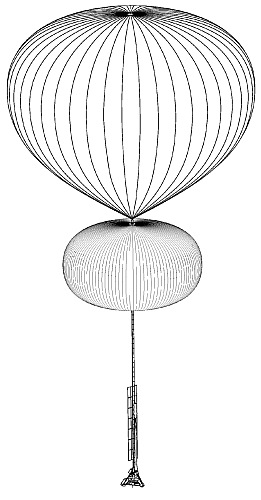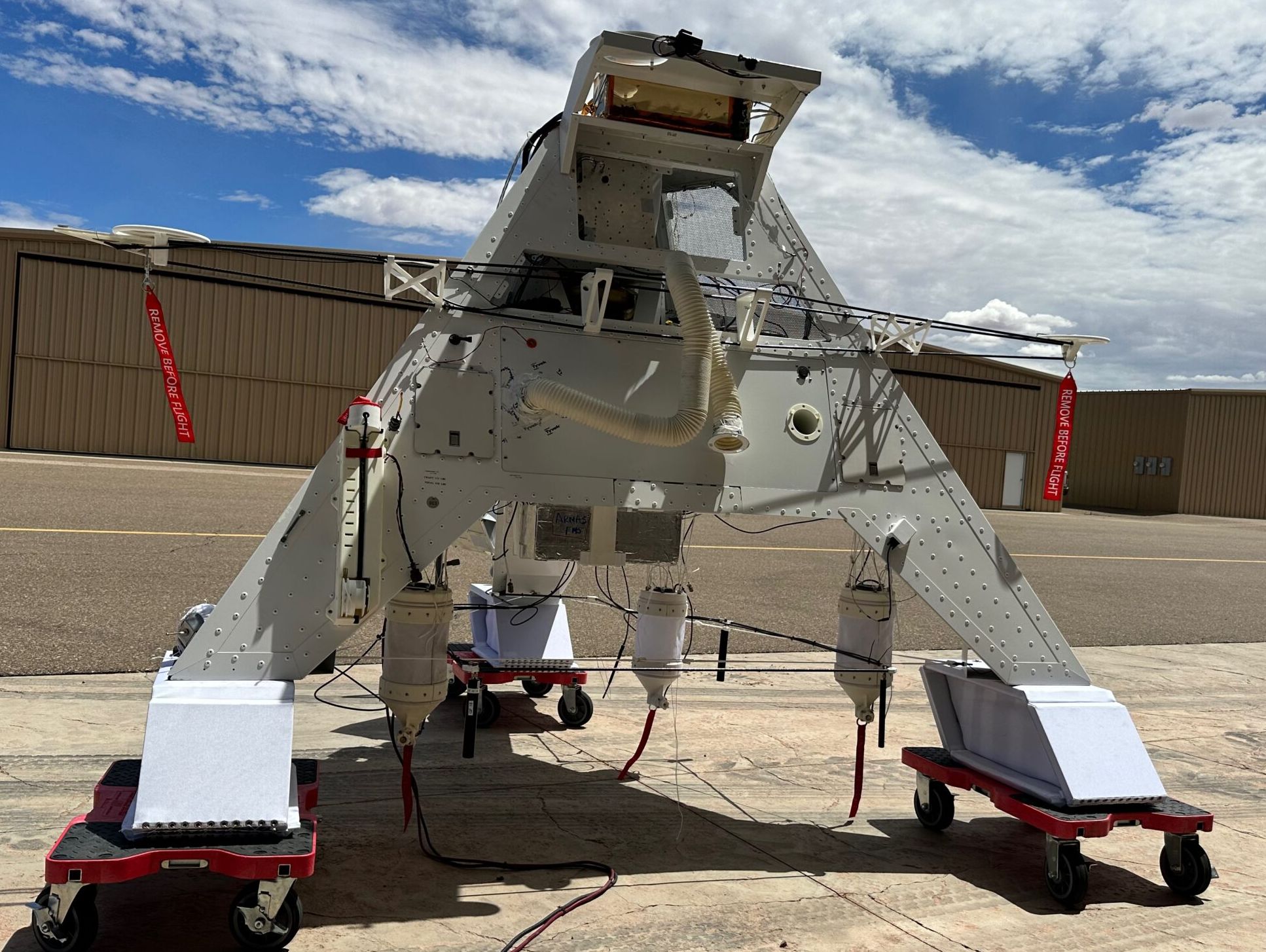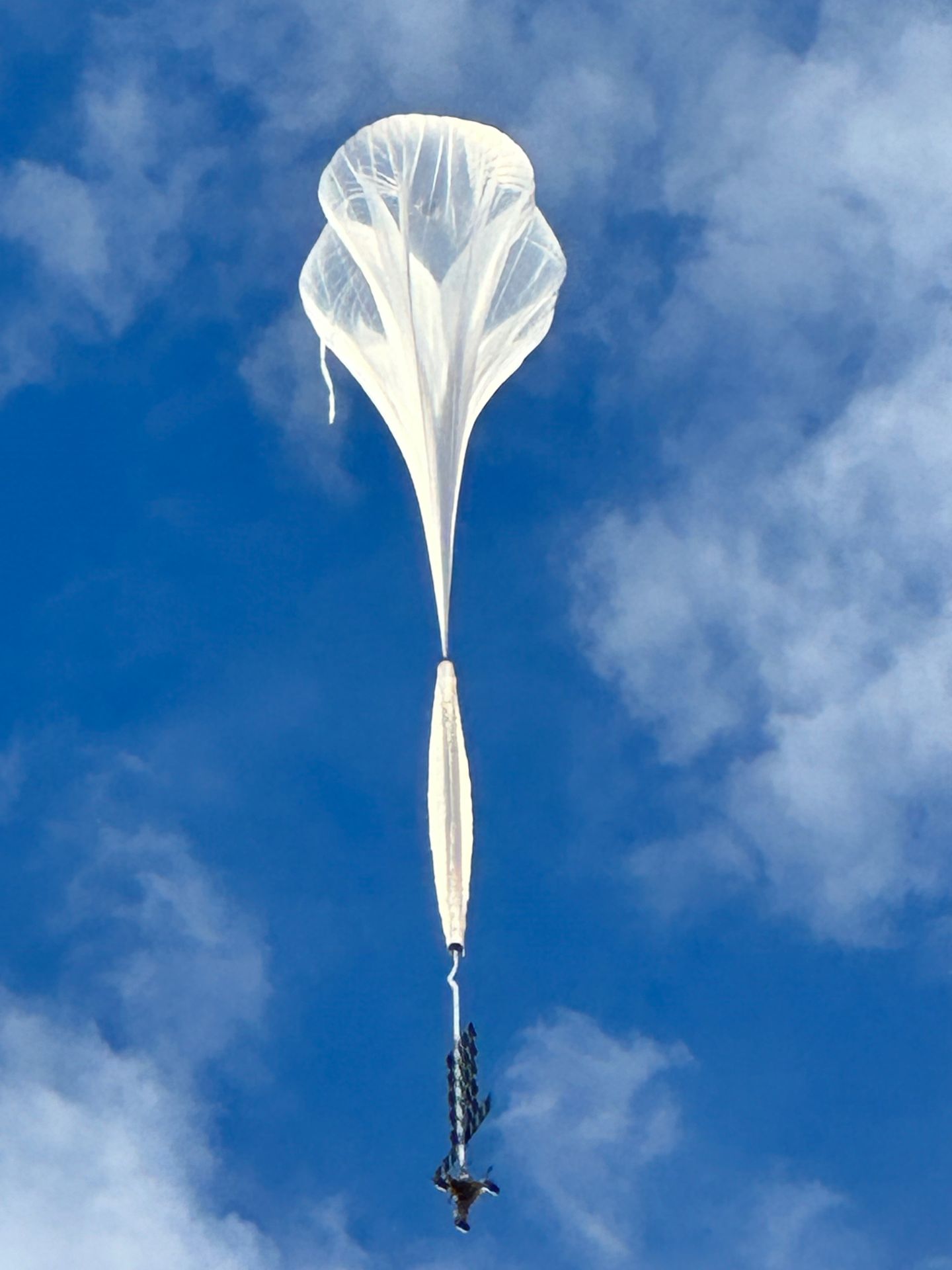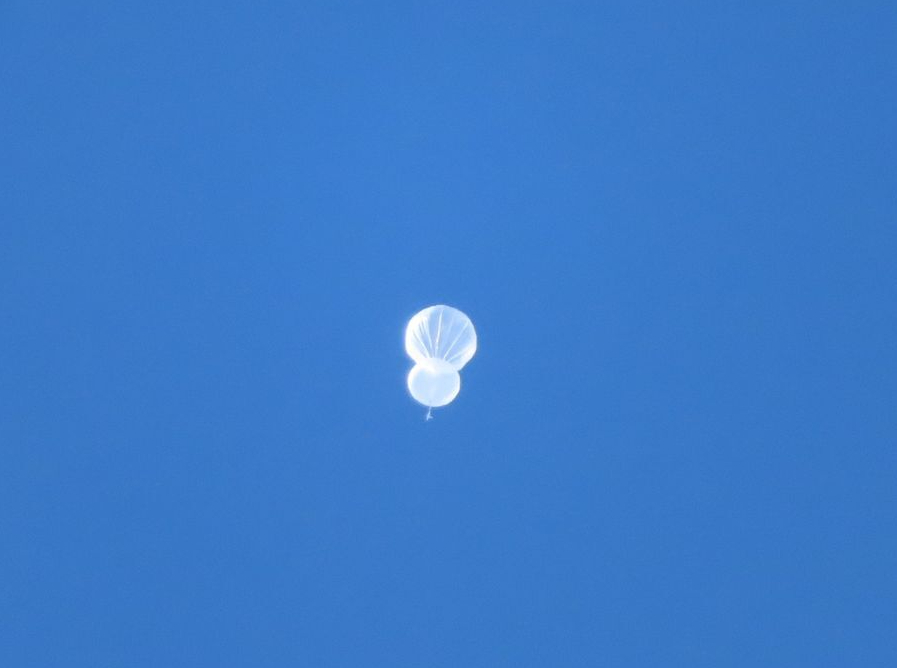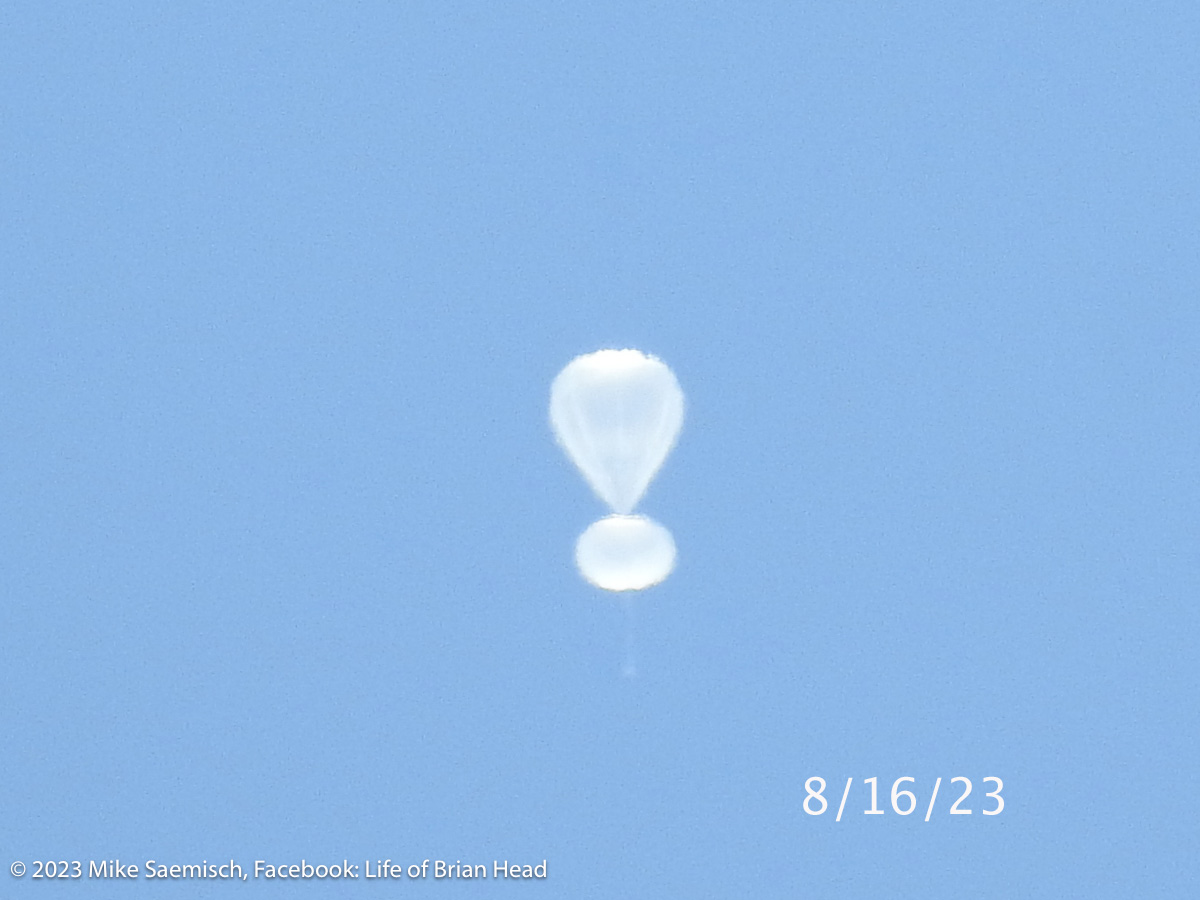Purpose of the flight and payload description
Stratollite is the trademark name of a tandem long duration balloon system given the technical name Variable Altitude Air Ballast Balloon System (VAABBS) developed by World View Enterprises. The system consists of a conventional zero-pressure balloon (ZPB) attached in tandem with an air ballast pumpkin super-pressure balloon (SPB) and a ladder which connects the ZPB to the gondola which is called the Stratocraft. This is an apparent modification of the Sky Anchor system first seen in the late 1960's. At left can be seen a scheme of its configuration (click for more details).
The ZPB is manufactured of custom-made UV light-resistant polyethylene with an approximate volume of 23.000 m3 and is inflated with Hydrogen or Helium. It provides initial and sustained lift for the system from launch to an altitude of about 75000 ft. The SPB located right below the ZPB is a pumpkin configuration which operates at a positive internal pressure in comparison to the external atmosphere and provides to the system a variable amount of effective ballast by pumping in or expelling out ambient air. It is composed of one or more compartments connected in series. By adding air to it the overall weight of the system increases thus making it descend, while venting air from it decreases the weight thus making the system ascend. The ZPB and the SPB are connected by a gimbal coupling both balloons, configured to rotate the SPB relative to the ZPB, where the SPB and the solar array are rigidly coupled with the ladder such that rotation of the SPB with the gimbal rotates the elongated ladder assembly and the solar array to a desired orientation. A special-built compressor provides air to the SPB and can be configured for providing a sufficient rate and volume of air at particular high altitudes in which the system will be flown. The particular design produces a moderate descent rate even at high altitudes where the air is thin and conventional compressors will not work. Rapid ascent is possible with SPB valve opening. Using this system, the ground operators can leverage different air currents at different flight levels to move the balloon towards an area of interest or to follow a more or less predetermined flight path.
Below the SPB is located the ladder assembly which connects the SPB balloon with the Stratocraft and also serves as support for the solar panel array, the hose which connects the compressor located in the stratocraft to the SPB (to pressurize it) and the parafoil which lands the stratocraft after the flight. The Solar power array is formed by a vertical train of one or more planar photovoltaic panels which are constantly turned toward the sun with a special pointing mechanism to gather maximum power during the day, charging batteries that are used for equipment and payloads at night. The length of the ladder is calculated to avoid shading from the balloons in order to provide sunlight to the solar array.
The Stratocraft is a tetrahedral structure that hangs at the end of the flight train and contains flight avionics, power systems, and a reconfigurable payload deck utilizing a modular open systems approach to host customer payloads. Currently, the Stratocraft can carry a payload mass of 50kg, provide 250W of continuous payload power, and 1000W instantaneous payload power. At the end of flight, the Stratocraft separates from the flight train and is remotely guided to a specified ground location. Landing pads located in the lower corners of the structure collapse upon landing to attenuate the impact and to protect the payload and onboard systems. It also includes bumpers which provide extra protection for the frame, in the event of rollover upon landing. The Stratocraft has azimuth pointing capability to maintain the vehicle pointing at the sun to maximize the efficiency of the solar array.
The Stratollite system can be scaled and configured simply for various missions and flight requirements: higher altitude and/or heavy lift missions with a higher capacity multi-stage compressor and larger volume SPB and ZPB.
Video footage of the integration of the gondola for the mission
Details of the balloon flight
Balloon launched on: 8/16/2023 at 13:45 utc
Launch site: Page Airport, Arizona, US
Balloon launched by: World View Enterprises
Balloon manufacturer/size/composition: Stratollite - Variable Altitude Air Ballast Balloon System (VAABBS)
Flight identification number: N137WV
End of flight (L for landing time, W for last contact, otherwise termination time): 8/17/2023 at 00:45 utc
Balloon flight duration (F: time at float only, otherwise total flight time in d:days / h:hours or m:minutes - ): 11 h
Landing site: NW of Mesquite, Nevada, US
The balloon was launched from Page Municipal Airport at 13:45 utc on August 16th, 2023. After a nominal ascent of two hours the system reached a float altitude of 70.000 ft. Although the flight was initially announced to be a multi-week mission, it just endured 11 hours. The payload landed at 00:45 utc NW of Mesquite, Nevada.
Regarding the short duration, World View stated that "...the mission was set to fly a minimum of 8 hours but could fly up to two weeks. The system was healthy and flying well when we brought it down...". A little more information was available from SET on its press release when they pointed out that "...GRYPHON29 encountered westerly winds at its float altitude that presented an unforeseen flight safety issue. Therefore, the flight was terminated by WVE about 11 hours after launch although the planned mission was for 30 days...".
The objective of Gryphon-29 flight was to lift two stratospheric payloads on a flight to the stratosphere: a sensor module part of the ARMAS (Automated Radiation Measurements for Aerospace Safety) program developed by Space Environment Technologies that would measure multiple forms of radiation in the stratosphere. The objective of the program is to build radiation forecast models that will improve aviation safety in the future for commercial and space operations.
The second payload belonged to Arizona State University's CubeSounder program, which in partnership with NASA's Flight Opportunities Program, is aimed to collect spectral measurements of the atmosphere to help to improve the future of weather forecasting models.
External references
- Sensing the weather: a high-tech sensor and a high-altitude balloon may create an efficient new way to forecast weather. Arizona State University website
- SET launches ARMAS dual monitor payload with World View SET website
- Was that a spy balloon over Southern Utah? Here's what you need to know about that white dot in the sky Cedar City News
- World View website
16332If you consider this website interesting or useful, you can help me to keep it up and running with a small donation to cover the operational costs. Just the equivalent of the price of a cup of coffee helps a lot.

